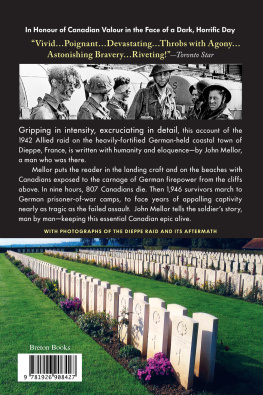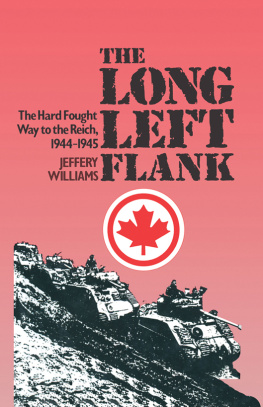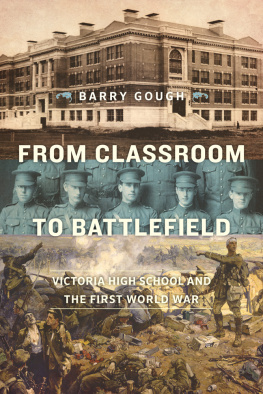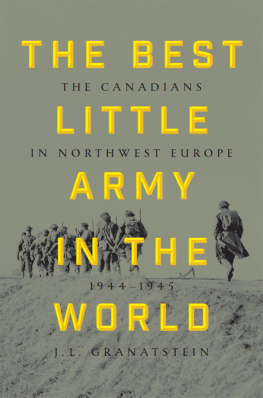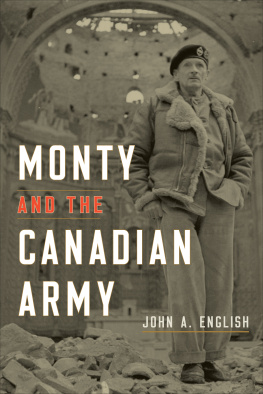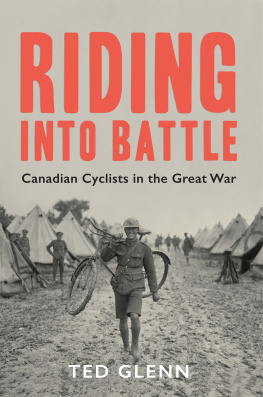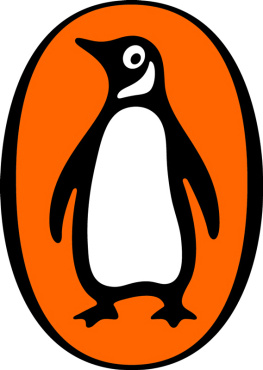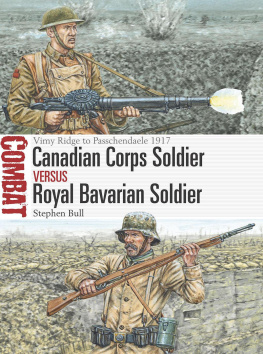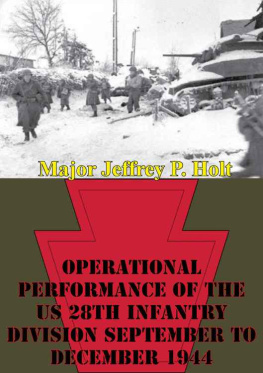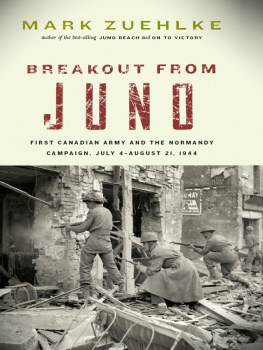Strangers in Arms
STRANGERS
IN ARMS
Combat Motivation in the Canadian Army,
19431945
ROBERT ENGEN

McGill-Queens University Press 2016
ISBN 978-0-7735-4725-4 (cloth)
ISBN 978-0-7735-9908-6 (ePDF)
ISBN 978-0-7735-9909-3 (ePUB)
Legal deposit second quarter 2016
Bibliothque nationale du Qubec
Printed in Canada on acid-free paper that is 100% ancient forest free (100% post-consumer recycled), processed chlorine free
This book has been published with the help of a grant from the Canadian Federation for the Humanities and Social Sciences, through the Awards to Scholarly Publications Program, using funds provided by the Social Sciences and Humanities Research Council of Canada.
McGill-Queens University Press acknowledges the support of the Canada Council for the Arts for our publishing program. We also acknowledge the financial support of the Government of Canada through the Canada Book Fund for our publishing activities.
Library and Archives Canada Cataloguing in Publication
Engen, Robert C. (Robert Charles), 1983, author Strangers in arms : combat motivation in the Canadian Army, 19431945 / Robert Engen.
Includes bibliographical references and index.
Issued in print and electronic formats.
ISBN 978-0-7735-4725-4 (cloth).ISBN 978-0-7735-9908-6 (PDF).ISBN 978-0-7735-9909-3 (ePUB)
1. Canada. Canadian Army History World War, 19391945. 2. World War, 19391945 Regimental histories Canada. 3. World War, 19391945 Participation, Canadian. 4. World War, 19391945 Manpower Canada. 5. World War, 19391945 Psychological aspects. 6. Motivation (Psychology) Canada History 20th century. 7. Military morale Canada History 20th century. 8. Soldiers Canada Psychology. 9. Combat Psychological aspects. 10. Combat sustainability (Military science). I. Title.
D768.15.E58 2016 | 940.53'71 | C2016-900172-5 |
C2016-900173-3 |
In memory of Mark Argyle.
And for all those who have walked beside me
on the seawall over the past two decades.
Contents
Figures and Tables
FIGURES
TABLES
Acknowledgments
The statement that I love writing more than just about anything else in the world will come as no revelation to my friends and family. It might, however, give some indication of the gratitude I feel, and the privilege it has been, for me to have been given the time and resources necessary to pursue a project of this scale. None of it would have been possible without a great deal of assistance.
Work on Strangers in Arms began almost the same day that my first book, Canadians Under Fire, was published in 2009, proving that there is indeed no rest for the wicked. This books life started at Queens University, and it benefited immensely from the sharp eyes and minds of Dr Doug Delaney, Dr Ian McKay, Dr Lisa Dufraimont, and Dr Lee Windsor. Yvonne Place, the history graduate assistant at Queens during my time there, was also with me every step of the way through the process. The debt of gratitude that I owe to Dr Allan English, without whom neither my first major project nor this one (nor, indeed, my next one) would have ever come to light, is one I will carry for the rest of my life.
Many hands helped to build this particular house. Shen-wei Mark Lim of the Southern Alberta Institute of Technology was (once again) invaluable in helping me build the databases that allowed the tumult of my evidence to be organized into something resembling a meaningful form. Data on courts martial for sexual assault in the Canadian Army were provided by Dr Claire Cookson-Hills, based upon research she originally did for Dr Jonathan Fennell. Dr Feriel Kissoon carried out an extremely helpful reconnaissance-in-force at the National Archives in London on my behalf to fill gaps left by my initial research trip. Dr Matthew Trudgen and Dr Doug Delaney provided additional information, guidance, and support during this process. Colin McDougalls papers were acquired for me from McGill University by Pippa Cookson-Hills, whose two-hour moonlighting session was greatly appreciated, though it marked the beginning and end of her time as a historian. I lived more or less continuously in the Ottawa basement suite of Eleanor Belshaw-Hauff for the first part of 2010 while I carried out the bulk of my archival research, and haunted the abode of Dr Madelaine Morrison on many a subsequent trip; I have always been made to feel so welcome that I now think of Ottawa as a second home.
The research for this book was made possible through doctoral fellowships awarded by the Social Sciences and Humanities Research Council, as well as the Ontario Graduate Scholarship. Teaching fellowships at Queens University also helped to make ends meet, and my students in History 476 (Canada at War) and History 121 (Intellectual Origins of the Contemporary West) at Queens and History 484 (The Stranger Arts of War) at RMC have armed me with an inspiration and confidence that I would not have thought possible. The Battle of Hill 70 Memorial Project has provided gainful and engaging employment during the preparation of this manuscript, and I owe thanks and gratitude in particular to Susan and Warren Everett and to the Hill 70 Projects Education Team. The manuscript was finalized and reviewed during my time as SSHRC postdoctoral fellow at the Royal Military College of Canada in 2015.
I would again like to thank the team at McGill-Queens University Press for helping yet another manuscript fly through the process, starting with my editor, Kyla Madden, whose faith in my work always exceeds my own. My two anonymous readers offered extremely kind remarks and contributed their insight to the project in its late stages. For both of my books I have relied upon Jane McWhinney, whose superb copyediting elevated the manuscripts.
There is a list as long as my arm of friends and family who have contributed love, support, and assistance to me over the long years of this process. You know who you are the Engens, Nicholbys, McNallys, Cookson-Hillses, and everyone else in Ontario, Quebec, and Alberta. Thank you to all. I would also be remiss if I did not mention the various penguins and parrots of our acquaintance. Especially Widget.
My grandfather, Robert Carl Schamuhn, passed away while this book was in press, and never got to see it on his shelf. I am left with the hope that he would have been proud.
None of this would have been possible had a brilliant, peculiar woman not sat down next to me at the University of Calgary twelve years ago and ended up staying by my side in perpetuity. Thank you, Dr Claire Cookson-Hills. I love you.
Robert Engen
12 December 2015
Strangers in Arms
Introduction
One of Canadas greatest war novels is Colin Malcolm McDougalls Execution. McDougall wrote the book semi-autobiographically and published it in 1958, as a purging of the whole war experience that he had carried back to Canada with him from the Second World War, where he had commanded an infantry company of Princess Patricias Canadian Light Infantry (PPCLI) between 1943 and 1945. Execution is the guiding metaphor for McDougalls entire experience of warfare.
Colin McDougall had waded ashore in Sicily with the Princess Pats as a platoon commander in July 1943, and fought in every subsequent action until January 1945, when a serious fever invalided him out of command of B Company.have seen hundreds of his men whose lives were primarily his responsibility struck down during that time, often while carrying out his orders.
Next page

